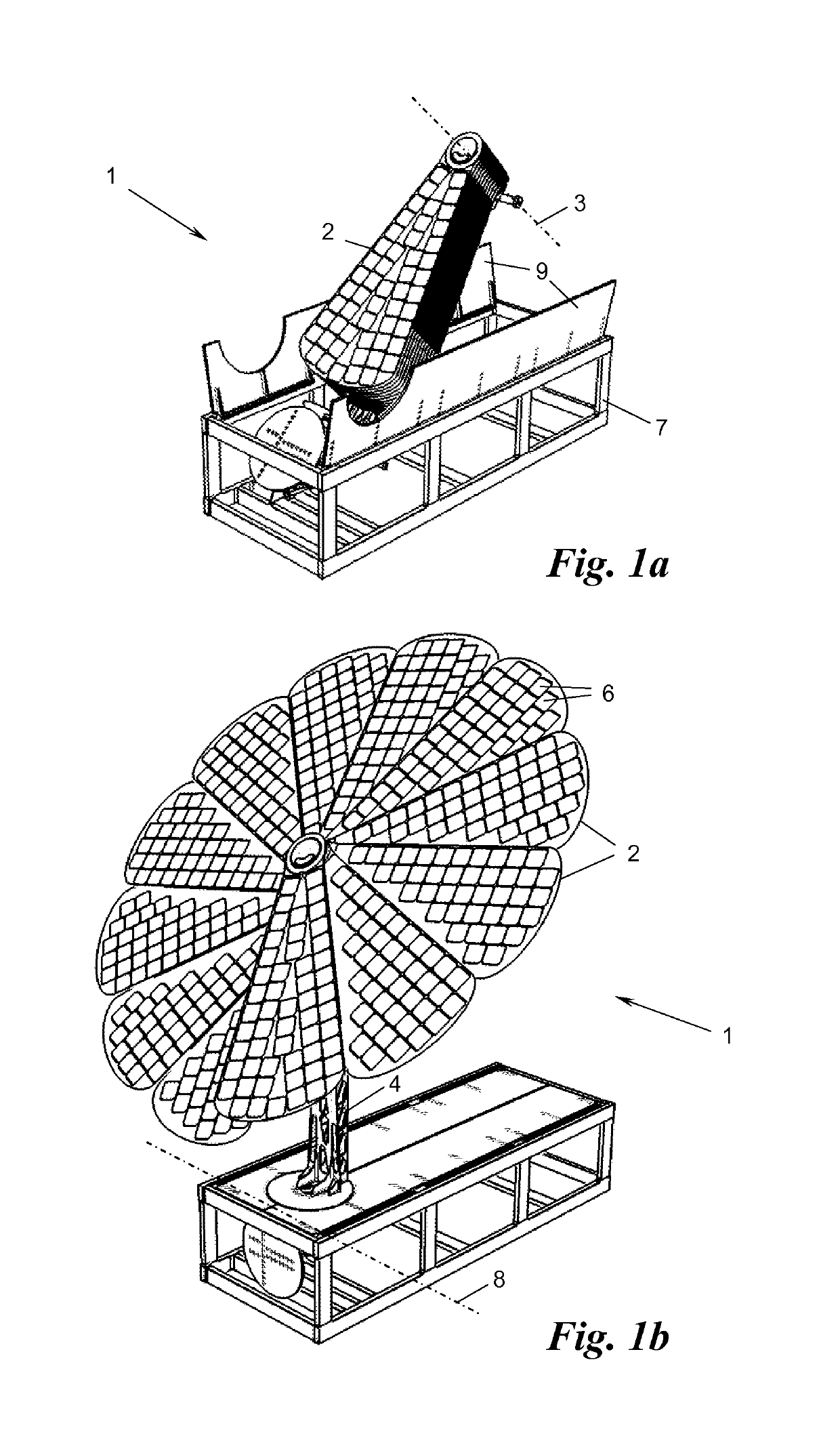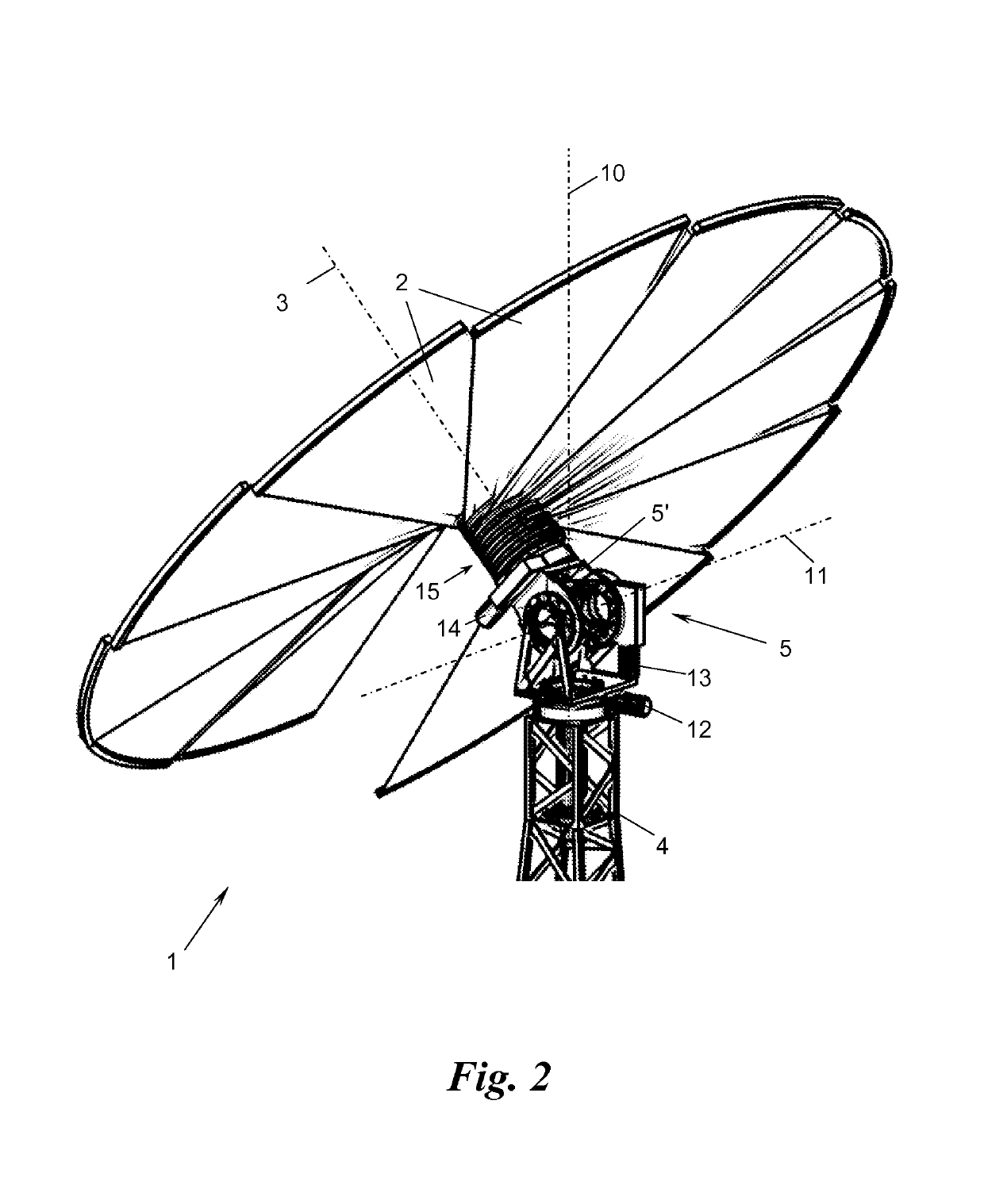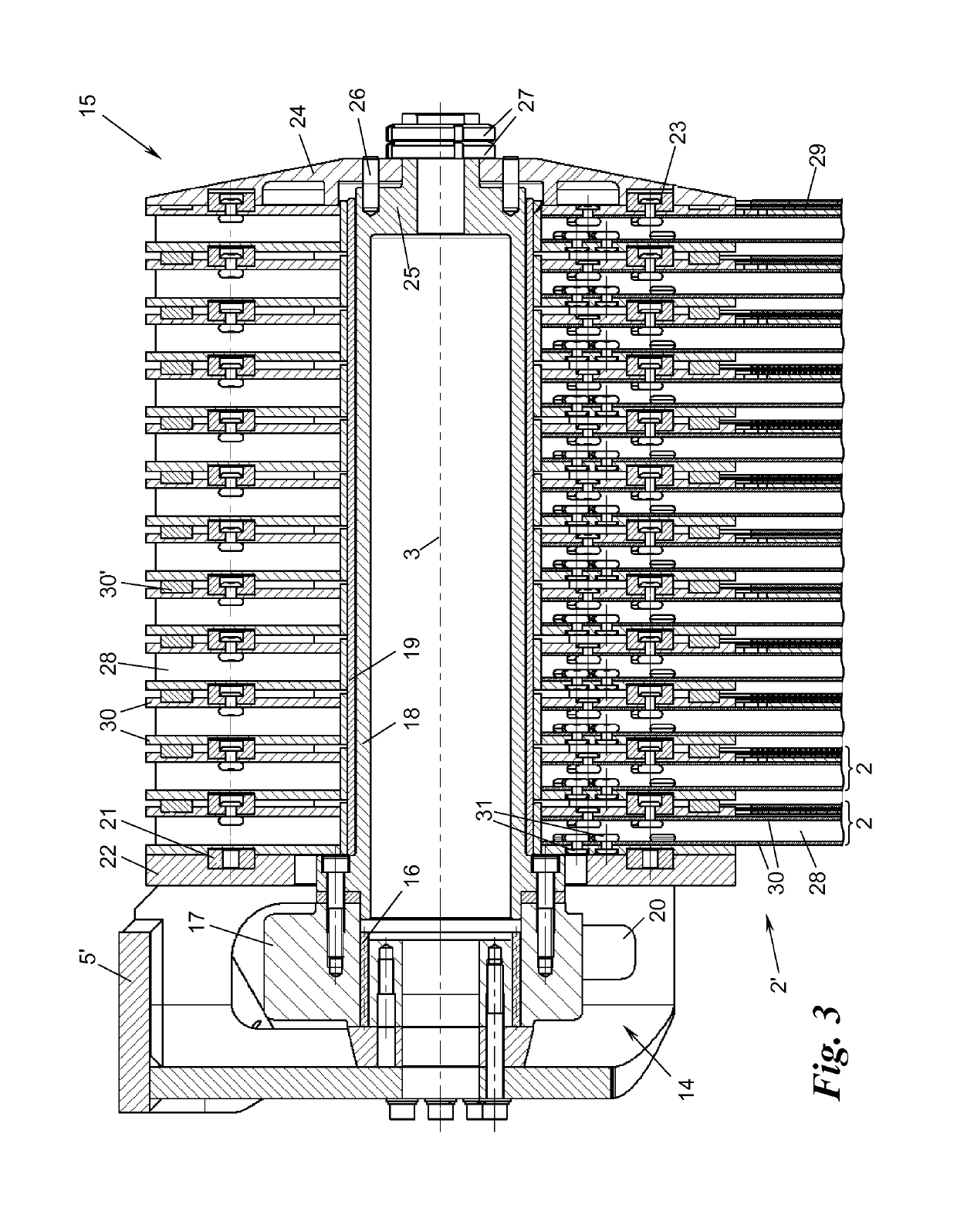Solar module
a solar module and solar panel technology, applied in the field of solar modules, can solve the problems of increasing the susceptibility to wind, affecting the flexibility of solar panels, and damage to solar panels, and achieve the effect of reducing friction and simplifying mounting
- Summary
- Abstract
- Description
- Claims
- Application Information
AI Technical Summary
Benefits of technology
Problems solved by technology
Method used
Image
Examples
first embodiment
[0032]FIG. 3 shows the fanning-out mounting 15 for pivotingly mounting the radially inner end sections 2′, which lie on the side of the axis, of the solar panels 2 on an end piece 5′ of the swivel head 5 in a sectional view. The head end piece 5′ mounts a tubular axis 18 via a rolling bearing 16 and an anchoring ring 17, onto which axis 18 the end sections 2′ of the solar panels 2—if applicable by interposing a sliding sleeve 19, e.g., made out of plastic such as, for example, PTFE—are threaded and mounted pivotingly. The end sections 2′ simultaneously serve for a dragging drive of the solar panels 2 during fanning-out and fanning-in. For this purpose, the axis 18 is rotationally driven about the rotation axis 3 by the rotation drive 14. The rotation drive 14 can, for example, be realised by providing the bearing ring 17 with an outer toothed ring and driving it via a worm drive 20 (depicted only schematically). The axis 18 could, however, also be rotationally driven in another way ...
second embodiment
[0037]FIGS. 5, 6a, and 6b show the solar panels 2, their end sections 2′, and the fanning-out mounting 15. In this embodiment, each end section 2′ has only one mounting plate 38, on which the support struts 28 are mounted on one side, for example, via screw joints 39. The mounting plates 38 are, for example, made out of 8 mm thick aluminium. Since the support struts 28 and the photovoltaic panels 29 carried by them have a higher thickness and the mounting plates 38 are thus to be mounted in an accordingly distanced manner on the axis 18, each mounting plate 38 is here provided with a spacer disk 40 lying against it on one side.
[0038]The spacer disk 40 is, for example, a plastic injection-moulded piece and contains—along further through-holes 41 for reducing material and weight—tangential oblong holes 35 analogue to the first embodiment of FIGS. 3 and 4. Again, bolts 42 engage into the oblong holes 35, which bolts 42 are anchored to the mounting plate 38 of the respective neighbourin...
third embodiment
[0041]FIGS. 7 and 8 show the solar panels 2, their end sections 2′, and the fanning-out mounting 15. Each end section 2′ here again comprises one single mounting plate 38, as in the embodiment of FIGS. 5 and 6, on which the support struts 28 for the photovoltaic module 29 are mounted via screwed or riveted joints 39. Between the mounting plates 38 of two neighbouring end sections 2′, there is again provided a spacer disk 45. The spacer disks 45 are this time, however, not connected with each respective flange plate 38 in a rotation-fixed manner, but are embodied in form of loose sliding disks, which rest on the axis 18, wherein the sliding disks are provided on at least one side with a slide coating or a separate sliding ring 45′ or are generally made out of friction-reducing material, like for example PTFE-plastic.
[0042]The spacer disks 45 have tangential oblong holes 46 or even bigger through holes, which now do not form limiting stops for catches themselves (as in the previous em...
PUM
 Login to View More
Login to View More Abstract
Description
Claims
Application Information
 Login to View More
Login to View More - R&D
- Intellectual Property
- Life Sciences
- Materials
- Tech Scout
- Unparalleled Data Quality
- Higher Quality Content
- 60% Fewer Hallucinations
Browse by: Latest US Patents, China's latest patents, Technical Efficacy Thesaurus, Application Domain, Technology Topic, Popular Technical Reports.
© 2025 PatSnap. All rights reserved.Legal|Privacy policy|Modern Slavery Act Transparency Statement|Sitemap|About US| Contact US: help@patsnap.com



